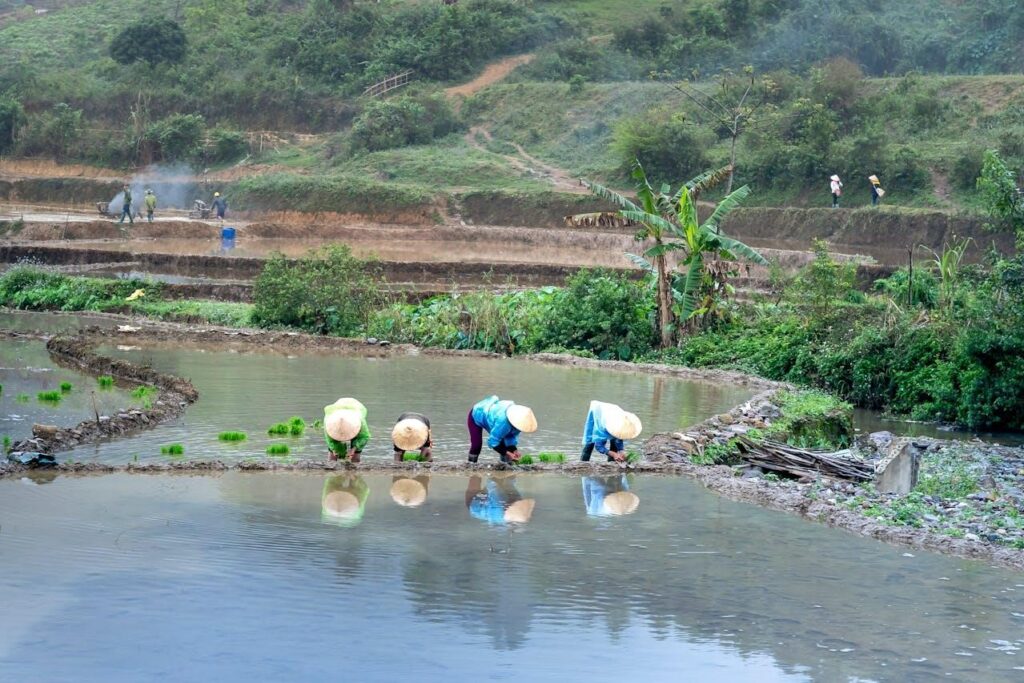As we progress through 2024, the agrarian sphere is wrestling with exceptional irrigation predicaments. Comprehending these barriers is paramount for agricultural virtuosos, leading to the creation of impactful solutions that conserve vegetation, preserve livelihoods, and fortify worldwide alimentation security.
Advanced Irrigation Technologies
Traditional methods languishing amidst constant stress, visionary alternatives herald an epoch of revolution in agricultural irrigation. Artificial Intelligence(AI) and data analytics are catalysing this metamorphosis, promising an unprecedented level of precision and effectiveness.
AI-Powered Water Management: AI mechanisms meticulously dissect colossal data sets to fine-tune water applications, forecasting precise amounts of water necessitated by each crop, factoring in soil quality, meteorological predictions, and cyclical plant growth. Customised irrigation timetables enable agrarians to combat excess, thereby conserving vital resources.
Smart Sensors and IoT: These contrivances deliver real-time analytics, empowering farmers to keep a close watch on soil moisture and climate conditions. Assimilated information can craft adaptive reactions to fluctuating circumstances, ensuring plants’ optimal nourishment.
Biggest Irrigation Challenges 2024 Innovative technologies not only bolster productivity but also preserve water resources, a critical need under the augmenting strain of global warming.
Climate Change and Irrigation Practices
Climate change’s impact has rendered traditional irrigation strategies increasingly untenable. Capricious weather patterns, extended droughts, and unpredictable precipitation have catalysed a move towards robust methodologies.
Sustainable Solutions: In response, techniques like drip irrigation and rainwater harvesting are steadily gaining momentum, minimising evaporation loss and optimising water resource utilisation, critical in water-deficient territories.
Resilience Building: More and more agriculturists are investing in resilient infrastructure, capable of withstanding extreme climate conditions. This includes mechanisms designed to harness and hoard water during periods of excess, to be utilised during parched spells.
The incorporation of these strategies is indispensable in adapting to the new agrarian landscape sculpted by climate change.
Economic and Social Implications
The irrigation hurdles of 2024 extend their implications beyond the technical parameters of agriculture. They impact the fiscal stability of farming communities and address the broader concern of global nutritional viability.
Economic Considerations: The substantial investment required in advanced irrigation systems poses a challenge to small-scale farmers. Bridging this fiscal chasm is vital to ensure equal opportunities to access these technologies, calling for governmental assistance and innovation partnerships.
Social Impact: Livelihoods of millions hinge directly on successful irrigation practices. A failure in these systems reverberates through the supply chain, impacting food accessibility and market prices across the globe.
Addressing these concerns necessitates a synergistic approach, amalgamating government bodies, private establishments, and the farming fraternity to advocate policies and innovations that facilitate sustainable agriculture.
Conclusion
In 2024, surmounting irrigation challenges requires a synergistic blend of technology and strategic collaboration. Leveraging cutting-edge technologies and fostering resilient practices, agricultural innovators can pave the way to a secure, sustainable future for global farming.
These progressive strides in farm machinery and equipment in VIC are not merely about refining water management; they also focus on ensuring the sustainability of agricultural practices amidst evolving climates and burgeoning populations. The mandate for farmers and innovators is unequivocal – embrace innovation, modify practices, and secure the future of worldwide food production.

